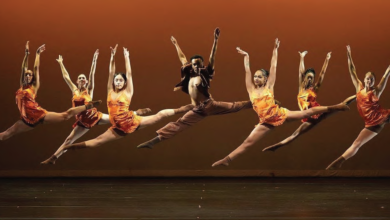Dance/movement therapy program in process of approval from American Dance Therapy Association
By Tatyanna Carman
Rider’s dance/movement therapy (DMT) concentration program is in the process of gaining approval from the American Dance Therapy Association (ADTA).
The concentration is a part of the the Master of Arts in Clinical Mental Health Counseling program on campus. It met the education and training standards for ADTA, so the program was submitted for candidacy in summer 2019 and its curriculum was reviewed, according to Assistant Professor of the DMT concentration Eri Millrod. She said it will take three years to gain full approval because it requires the first cohort of students to graduate before gaining approval.
Rider would be one of six programs in the nation with this approval and could be the first in New Jersey.
“So [the program] launched, this is the first year, so 2019 fall was the first semester that we started,” Millrod said “We started developing the program in 2013, maybe the first discussion on like ‘Let’s do this,’ was that long ago. And then Rider University and all the stakeholders approved it in the spring of last year. So between spring of last year and September of last year, we recruited students.” DMT graduate student Stephanie Greenleaf explained the importance of the program.
“This program allows Rider to be at the forefront of clinical mental health education and creative arts therapy,” she said. “Being the only school in New Jersey to offer this concentration, Rider is now it for [DMT] in our state and will graduate the first official class of dance movement therapists.”
Greenleaf said the program gave her a new sense of purpose as well as an opportunity to use what she loves to impact both individuals and society.
“As I get further into the DMT program, I am realizing how important it is to be a part of this new endeavor for Rider University,” she said. “With mental health being such a big part of our national conversation right now, knowing that we will have validity to bring the creative arts into that conversation is exciting.”
Millrod said she used her 27 years of dance and movement therapy experience, her expertise in teaching students from other programs and seeing their needs and her doctoral dissertation on training DMT students to help create the program.
“When they graduate from this program, they should be able to practice both verbal-based therapies and non-verbal based therapy through dance and movement therapy,” Millrod said. “It’s never enough, two and a half, three years. Even the part-time where people take four years and a semester to finish. It’s not enough to be a therapist. So you can imagine being a therapist is very complicated and you need to experience it. So they’re not going to be ready to be a full-fledged therapist. They will be ready for the entry-level credentials, which is what it does. I hope they have a good enough foundation to understand that they need not be this finished product, that they are a work in progress.”
Millrod emphasized that the most important thing for a DMT is to have “tolerance of the unknown” which she says relates to the creative process behind the field.
She also mentioned that the candidacy is pragmatic in the sense that it qualifies graduates of approved programs to qualify for the entry-level registration certifications, which sets the groundwork for board certification. Millrod also shared what she thought the concentration adds to the Rider community.
“[DMT] is very much a social justice kind of a practice. It’s very much current in terms of embracing multiculturalism, diversity and inclusion, because dance movement therapists work with people who have disabilities, whether it’s intellectual, mental, physical,” Millrod said. “I worked with mentally-ill patients and people with addictions, so we advocate naturally for their equal rights as citizens of the larger society. I think it does fit into Rider’s inclusive, diverse culture and hopefully it will create, as a dance movement therapist, an awareness for wellness, holistic wellness. Not just thinking and cognitive, but body mind wellness. So I hope it goes beyond the walls of the graduate program.”



